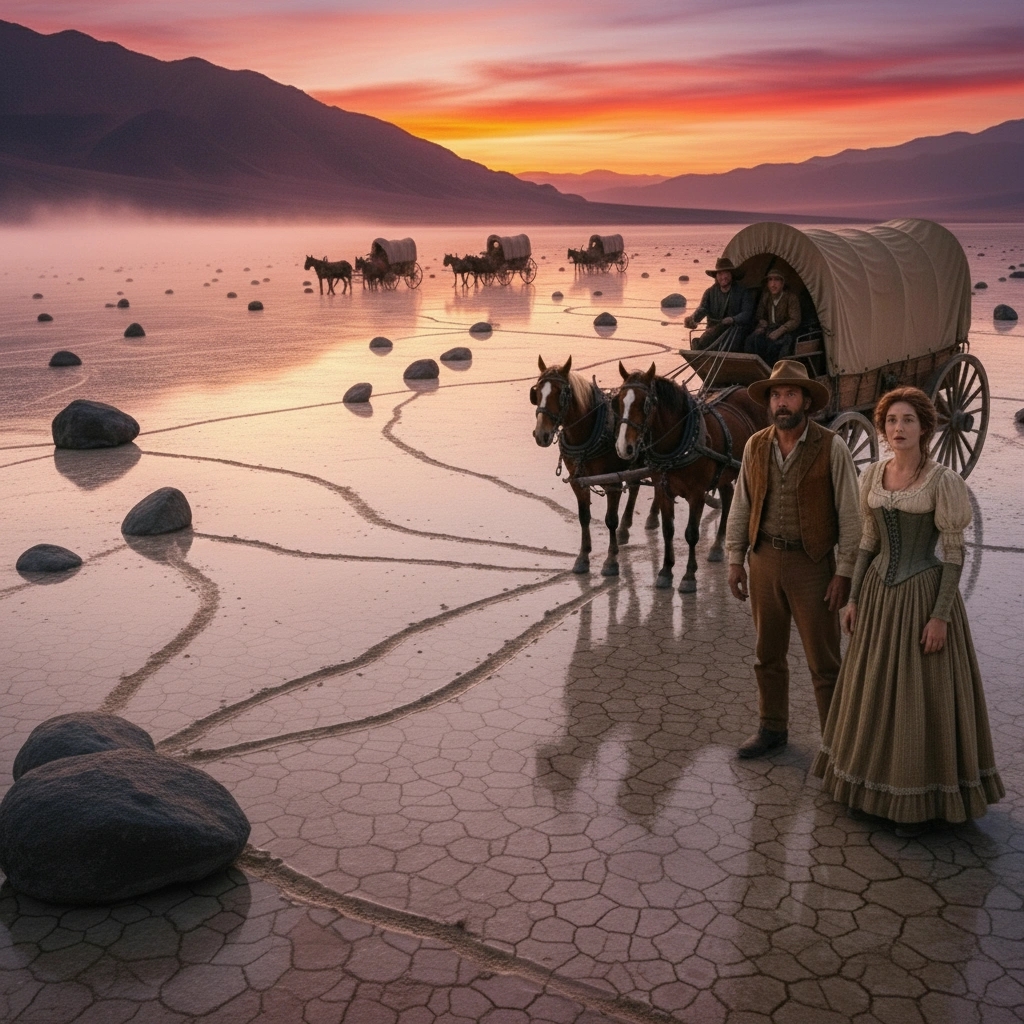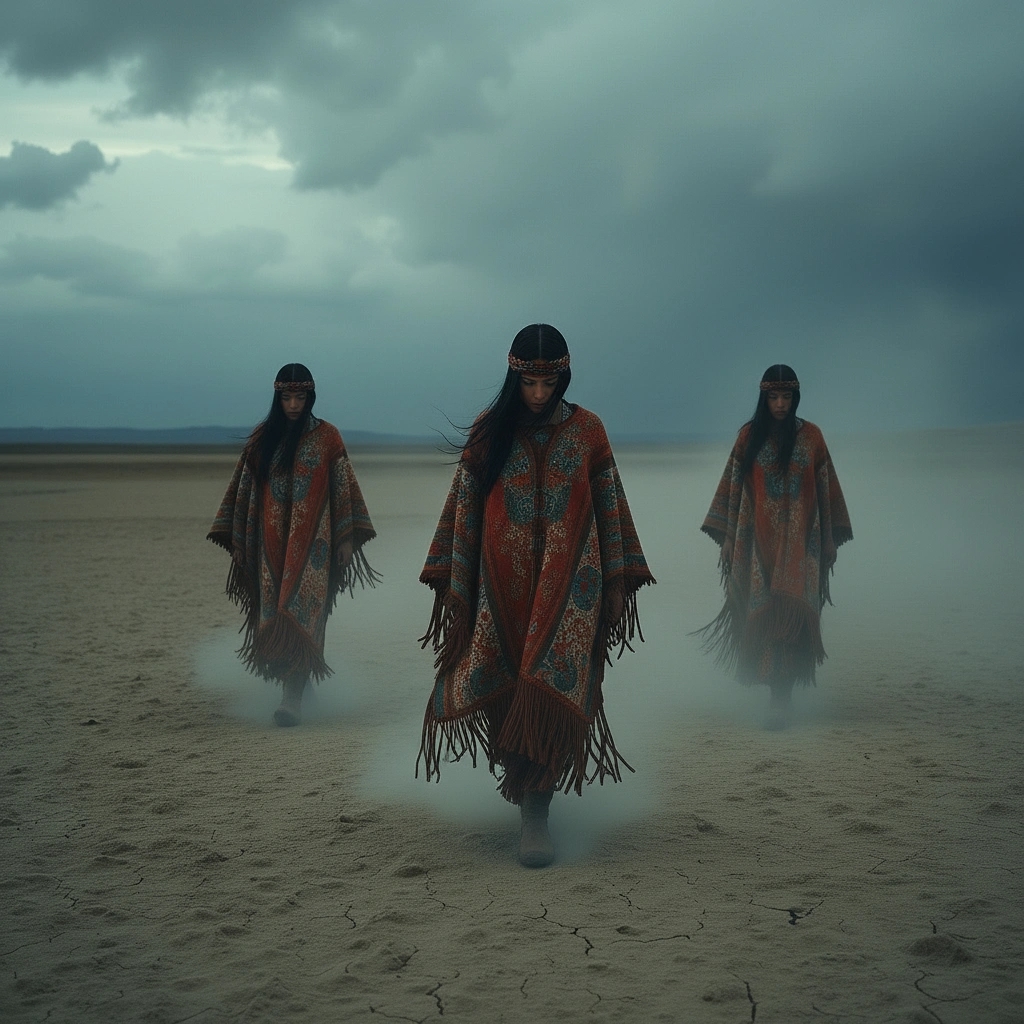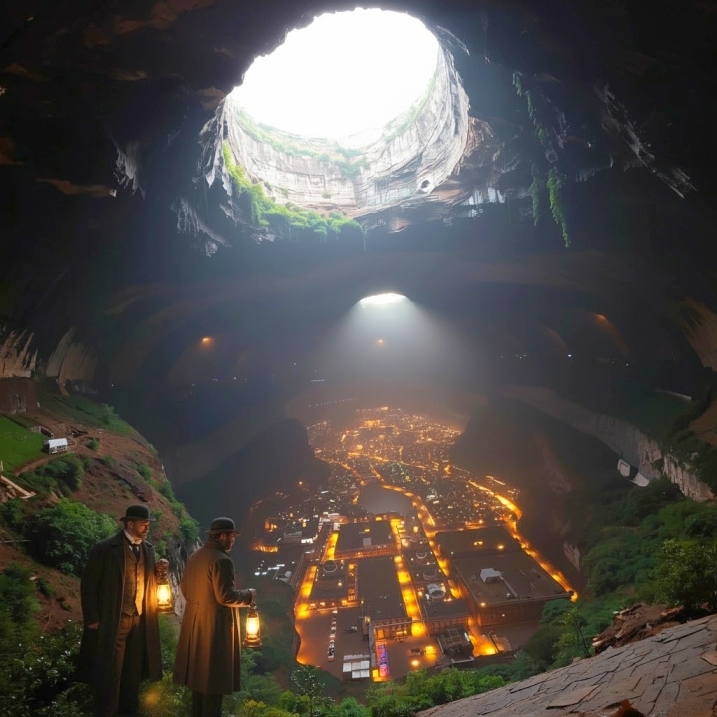
Across the dry, desolate landscapes of California’s Death Valley and parts of Nevada’s desert basins, an eerie and fascinating phenomenon has puzzled observers for more than a century — rocks that seem to move on their own. These “walking rocks” also known as “sailing stones”, sliding rocks, rolling stones, and “moving rocks” leave long, winding trails etched into the cracked mud of ancient lake beds, as if dragged by an invisible hand.
The most famous site of these mysterious rocks is Racetrack Playa in Death Valley National Park, California. This remote, flat, and barren lake bed stretches for about three miles, surrounded by dark dolomite mountains. Scattered across its dusty surface lie rocks of various sizes — some small as a fist, others weighing hundreds of pounds — all appearing to have slid across the playa, leaving trails that sometimes stretch for hundreds of feet.
For decades, no one had ever witnessed the rocks in motion. Theories abounded: powerful winds, magnetic forces, aliens, or even supernatural activity. Some people believed, for centuries that ghosts or demons or even the Devil Himself were responsible for the movements of the rocks. Early visitors in the 1940s and 1950s took photographs of the trails and returned years later to find the stones had changed position — but no tracks of human interference or machinery were ever found.
Scientific Investigations and Breakthroughs
By the late 20th century, scientists began investigating the mystery in earnest. The playa’s surface, they discovered, was composed of fine clay that becomes extremely slick when wet. But that alone couldn’t explain how multi-pound rocks moved smoothly without rolling.
In 2014, researchers Richard Norris and James Norris from the Scripps Institution of Oceanography finally captured the phenomenon in action. Using time-lapse photography, GPS trackers, and weather sensors, they witnessed the movement firsthand. After a rare winter rainstorm, a thin layer of water collected on the playa. Overnight, freezing temperatures caused it to form a thin sheet of ice — just a few millimeters thick. As the sun rose and the ice began to melt and crack, light winds pushed the floating ice panels across the surface. The ice gently nudged the rocks, allowing them to slide slowly — just a few inches per second — and carve out those long, graceful trails. This combination of ice, water, and wind turned out to be the perfect natural mechanism for moving stones weighing up to several hundred pounds without human or mechanical help.
Dissenting Opinion That Has to be False
There are folks who claim that in the Mohave Desert there are heavy stones that move, leaving long traces in the sand, even when no ice is present. But, there is a very strong possibility that this particular theory is wrong because the thin sheet of ice caught in time-lapse photography by the two Norris scientists, is virtually invisible with naked eyes. Such super thin ice is only a few millimeters thick. One millimeter is only 0.0394 of an inch. Three millimeters would be 0.118 of an inch. So someone who hears or reads about very thin ice being responsible for moving the heavy stones; thin sheets of ice forming in the night under the stones, then breaking apart in the day under the warmth of the sun, and then slowly dragging the heavy stones some distance; in looking for that ice, without special visual equipment, will not see that ice. And then falsely assume the ice is not there.
Other Locations in Nevada and Beyond
While Racetrack Playa remains the most famous site, similar phenomena occur in parts of Nevada’s playas, such as Black Rock Desert, home of the Burning Man festival. There too, occasional movement of stones has been recorded, though the trails are often shorter and less distinct due to differences in soil and weather patterns.
Across the Great Basin region, other dry lake beds show evidence of similar natural dynamics — where periodic rains, freezing nights, and gentle winds combine to create temporary conditions that allow rocks to “walk.”
The Moving Stones of the Desert: Native American Legends of Living Rocks
Across the vast deserts of the American Southwest—where silence reigns and the sun bakes the earth into shimmering mirages—there are stories of stones that move on their own. Long before scientists puzzled over the mysterious sliding rocks of Racetrack Playa in California’s Death Valley, Native American tribes told tales of stones that walked, danced, and whispered under the desert moon.
Ancient Beliefs of Living Stones
Among many Native American cultures, the land itself is seen as alive—every mountain, tree, and rock carries spirit. In the traditions of the Paiute, Shoshone, and Chemehuevi peoples, who lived near Death Valley, stones were considered ancient beings—keepers of memory and wisdom. Some legends speak of rocks that travel across the sand as a way of communicating with the Great Spirit, marking messages or boundaries invisible to human eyes. To the Paiute, for instance, rocks were not lifeless objects but elders of the world. They were believed to remember the creation of the earth and to hold the songs of time. Some oral stories describe “sleeping stones” that would wake during storms or after sacred ceremonies, slowly gliding across the desert floor to new resting places before sunrise.

The Whispering Rocks of Death Valley
In the harsh basin that modern science calls Racetrack Playa, the Paiute had a name for the valley that meant “The Place Where Rocks Go to Walk.” According to legend, spirits of ancestors roamed the playa at night, guiding stones across the clay in long, graceful lines. These spirit-guided rocks were said to move when the veil between the living and spirit worlds thinned—often during strong desert winds, when whispers could be heard rolling across the flats like voices of the dead.
The Chemehuevi people, who also lived around the Mojave Desert, told of spirit dancers who became trapped in stone after breaking tribal laws. These stones were said to move only under certain celestial alignments, dancing slowly across the sands as their spirits sought forgiveness or freedom.
Moving Stones Beyond Death Valley
Further east, among the Navajo (Diné), similar tales spoke of stones that rolled uphill or shifted positions overnight. These rocks were believed to be enchanted guardians, protecting sacred lands or ancient burial sites. Travelers were warned not to disturb them, for moving or marking a sacred stone could bring bad luck or illness.
In Hopi tradition, stones are living entities connected to the Earth Mother. Some storytellers say the desert stones once had voices and could sing. When humanity grew careless and stopped listening, the Great Spirit silenced them—but on rare occasions, the stones still stir, trying to remind people of their forgotten harmony with nature.
A Bridge Between Legend and Science
When early settlers and explorers in the 19th century saw strange tracks left by rocks in Death Valley, they often dismissed Native legends as superstition. But modern studies in the 20th and 21st centuries revealed that the stones truly do move—pushed by thin sheets of ice and wind across the slick mud after rare winter rains. Science confirmed the movement but not the mystery’s deeper meaning. For the Native peoples, the rocks’ motion was never about physics—it was about spirit, balance, and respect for the Earth’s living forces. Even now, many elders view scientific explanations as complementary, not contradictory: the wind and ice are simply the hands of the Great Spirit at work.
Standing on the empty playa today, one can still feel the power of these stories. The trails etched into the clay seem like messages written by ancient hands—reminders that, to those who first walked these deserts, everything moves, everything lives, and everything speaks. The moving stones remain one of the most poetic symbols of Native American connection to the land—a reflection of their belief that the desert is not barren, but alive with unseen motion and ancestral memory.
Conclusion
The walking rocks of California and Nevada remind us how powerful — and delicate — natural forces can be. What appeared for decades as a supernatural mystery turned out to be a slow, quiet dance of water, ice, and wind working together over time. The spectacle may seem miraculous, but it is a perfect example of how nature often hides its most fascinating secrets in plain sight — revealed only to those patient enough to observe. Today, visitors to Racetrack Playa are asked not to disturb the rocks or walk on the wet playa, as footprints and displaced stones can permanently damage the fragile trails. The best time to visit is during dry months, when the dramatic paths etched into the surface remain visible — silent witnesses to a mystery once thought beyond explanation.


